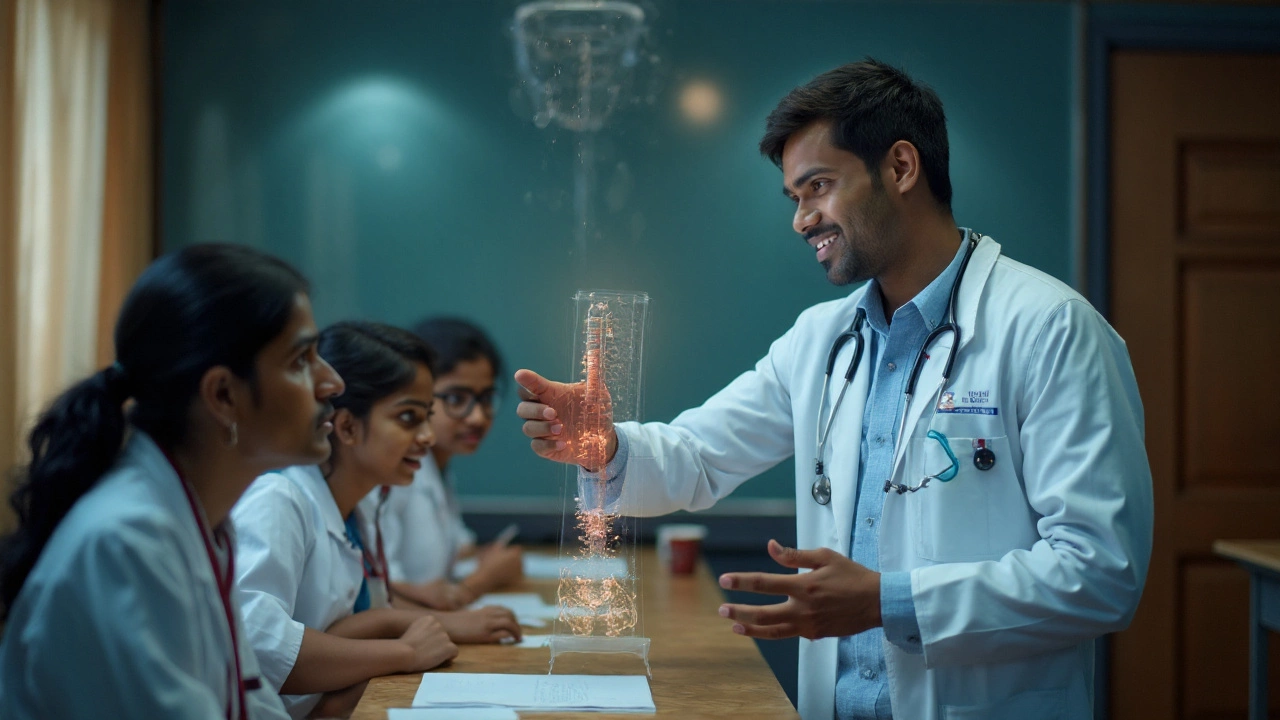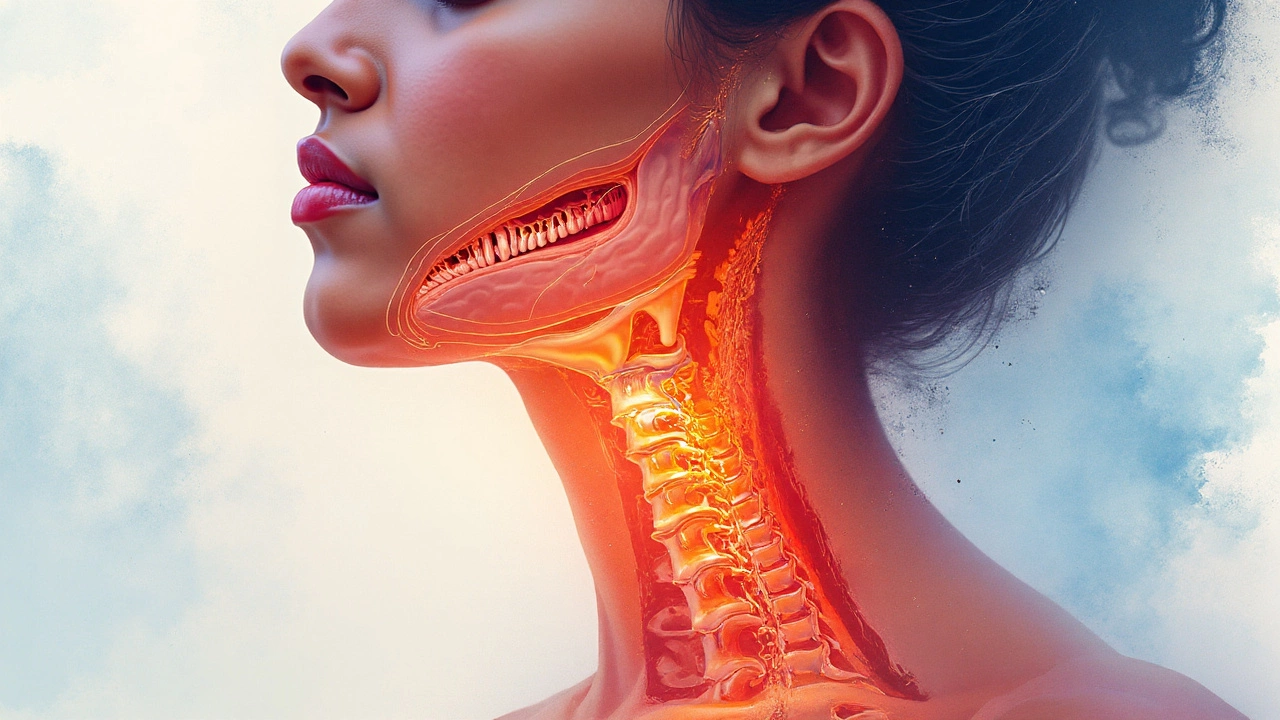Picture breaking a bone—maybe your arm, or collarbone, or even your pinky toe. You show up at the clinic, get an X-ray, and then either a cast, sling, or pep talk. Your body does its strange magic. A couple months later, the damage disappears, leaving just a weird story and a sometimes itchy cast memory. That’s the wonder of bone healing—it’s reliable, it’s stubborn, and most of us count on it. But what if I told you there’s a bone in your body that refuses to play by that rule? Right in your neck, hidden in a spot even anatomy geeks forget, is the hyoid. It holds a strange claim: it almost never heals when broken. That’s not some medical urban legend, but a weird reality that’s both fascinating and a little unsettling.
Why Bones Heal and the Hyoid Doesn’t
Every bone in your body is made to heal. When you break your femur or snap your wrist, your body sends an army of cells—osteoblasts, osteoclasts, and helpers like platelets and stem cells—to patch things up. Most bones have a strong blood supply, a sturdy structure, and are anchored to others by joints and muscles. This gives them the backup they need to repair.
Here’s where the hyoid does its own thing. The hyoid is this small, horseshoe-shaped bone floating high up in your neck, just under the chin. Unlike pretty much every other bone you know, it isn’t connected to another bone—it’s held in place by a delicate tangle of muscles and ligaments. It’s like a passenger train with no stations, suspended in midair. It’s also tiny and isolated from all the usual supply routes for healing, such as a rich direct blood flow or a solid joint.
The result? When the hyoid bone fractures—which happily isn’t very often—it almost never heals the way we expect. Instead of forming a strong, fused repair, it stays unstable or is left with a kind of loose, wobbly connection. For most people, this never becomes a personal issue (thankfully, neck trauma isn’t exactly a daily event!), but in forensic science and trauma medicine, it’s a headline fact. Medical researchers have looked at older skeletons and found that healed hyoid injuries are vanishingly rare—unlike healed ribs, limbs, or skulls, which are super common in archaeological digs.
Most of the time, if the hyoid does break, it’s through direct trauma—like a hard blow to the neck, certain strangulation injuries, or major car accidents. The soft tissue attachments can’t always protect it, and when it goes, it’s usually a red flag for serious violence or trauma. If you’re interested in forensic facts, get this: in strangulation deaths, a fractured hyoid can tip off investigators that foul play was involved, especially in adults over 20 (as the bone fuses as we age). Still, even in these rare traumas, healing seldom happens naturally.
How Does the Hyoid Bone Function?
You’d think the hyoid would matter less since it’s so hard to injure and so reluctant to heal. But what it actually does is wild. The hyoid is a linchpin for speaking, breathing, and swallowing. It anchors muscles not only from the tongue but also from the larynx (voice box), jaw, and even upper chest. Try swallowing deliberately, or yawn, or say something loud—you’re flexing a hyoid-driven system you never think about.
Here’s a breakdown of what makes the hyoid essential:
- Gives a stable base for the tongue.
- Supports the airway and helps keep it open while you sleep and breathe.
- Anchors muscles needed for your voice—no hyoid, no singing or talking.
- Acts as a shield of sorts, protecting structures like the epiglottis during swallowing.
If your hyoid bone breaks, everything above goes haywire. People can have pain while swallowing (odynophagia), changes in voice, and even trouble breathing if the fracture shifts the airway. And because the bone won’t knit itself back together easily, these symptoms can linger until a doctor fixes it, often through surgery—one of the rare times the hyoid gets stitched or pinned back together.
Let’s look at an interesting tidbit: Animals have hyoid bones too, but in creatures like apes or big cats, they’re often larger and have more parts, which help them roar, howl, or make all sorts of unique noises humans can’t. The way the hyoid is built in humans and some primates might even be part of why we can talk.

Why Doesn’t the Hyoid Heal? The Science Behind the Mystery
Plenty of bones have challenges when healing—older adults find bones knitting together slower, and joints close to the skin (like fingers or collarbones) might heal crooked if you’re not careful. But the hyoid takes things to a different level. Here’s why:
- No direct bony attachments: It’s not part of a bigger framework, so broken pieces aren’t held close together by neighboring bones.
- Thin muscles and ligaments: Unlike thick muscle layers over your calves or thighs, the hyoid's soft tissue support is more like rubber bands than cables.
- Poor blood supply: Bones need blood to heal. The hyoid lives in a zone with less direct blood flow than weight-bearing bones.
- Constant micro-motions: Every time you swallow, yawn, or talk, the hyoid jiggles around. This stops the two pieces from staying still long enough to fuse.
Doctors have catalogued this in medical texts for over 50 years. In a review of fracture healing across bones, the hyoid is the outlier everyone points at—not healing even after months, unless you actively keep it immobilized (which is tricky, given its job in swallowing and speech). Even more frustrating, surgery isn’t always helpful, since getting solid fixation is tough; the bone’s shape, location, and movement make reliable pinning difficult.
| Bone | Typical Healing Time | Chance of Nonunion |
|---|---|---|
| Femur (thigh) | 4-6 months | 2-5% |
| Clavicle (collarbone) | 6-12 weeks | 15% |
| Hyoid Bone | Rarely heals without intervention | >90% |
| Rib | 4-6 weeks | Very Low |
So, if someone fractures their hyoid and it actually knits back together by itself, that’s a medical miracle worth writing about. Most doctors won’t see it over a career. For anyone worried, the best way to keep your hyoid safe is surprisingly simple—avoid direct neck trauma, be alert to airway issues, and don’t ignore pain after an accident that involves your throat or voice.
Strange Facts, Forensics, and What You Need to Know
The hyoid isn’t just unique for its awkward attitude about healing. It keeps showing up in headlines for other reasons, too. Here are a few mind-benders:
- The hyoid is often called a “forensic favorite”—in strangulation cases, a broken hyoid is a red flag for violence, especially in older adults, because the bone is more likely to break after it fuses in your 30s or 40s.
- Ancient skeletons with hyoid injuries are rare but priceless for archeologists—they can signal violent deaths or accidents thousands of years ago.
- For singers, opera coaches sometimes talk about 'feeling the hyoid' when working on vocal technique, as controlling the surrounding muscles can help with pitch and range.
- Speech therapists, swallowing specialists, and otolaryngologists (ENT doctors) all track hyoid movement during exams and sometimes use fiber-optic cameras to see if it’s working correctly.
If you’re worried about keeping your bone never heals safe, a few simple steps can cut down your risk. When playing contact sports, wear a neck guard or protective gear if possible, especially in wrestling or martial arts. Bike riders, always wear a helmet and watch for falls that could lead to neck trauma. People with swallowing problems should get checked by a doctor, since hyoid injury can sometimes be linked to unexplained pain or choking.
Finally, let’s break one last myth: just because the hyoid doesn't heal like your leg or arm doesn't mean a fracture is a death sentence. With medical care—sometimes a surgery, sometimes just rest—it can often return to decent function, even if it never fully fuses. Most people who suffer a hyoid fracture and get the right treatment recover more or less completely, with few long-term consequences. It’s proof that, even when the body’s repair systems give up, a little medical help can fill the gap.

 How to Identify Legitimate Online Pharmacies Safely
How to Identify Legitimate Online Pharmacies Safely
 Top Vitamins That Grow Hair Fastest: Science‑Backed Guide
Top Vitamins That Grow Hair Fastest: Science‑Backed Guide
 Does Costa Rica Have Better Healthcare Than the United States? A Real-World Comparison for Medical Tourists
Does Costa Rica Have Better Healthcare Than the United States? A Real-World Comparison for Medical Tourists
 Foods That Should Not Be Eaten Together According to Ayurveda
Foods That Should Not Be Eaten Together According to Ayurveda
 Can an Orthopedic Doctor Fix a Pinched Nerve?
Can an Orthopedic Doctor Fix a Pinched Nerve?